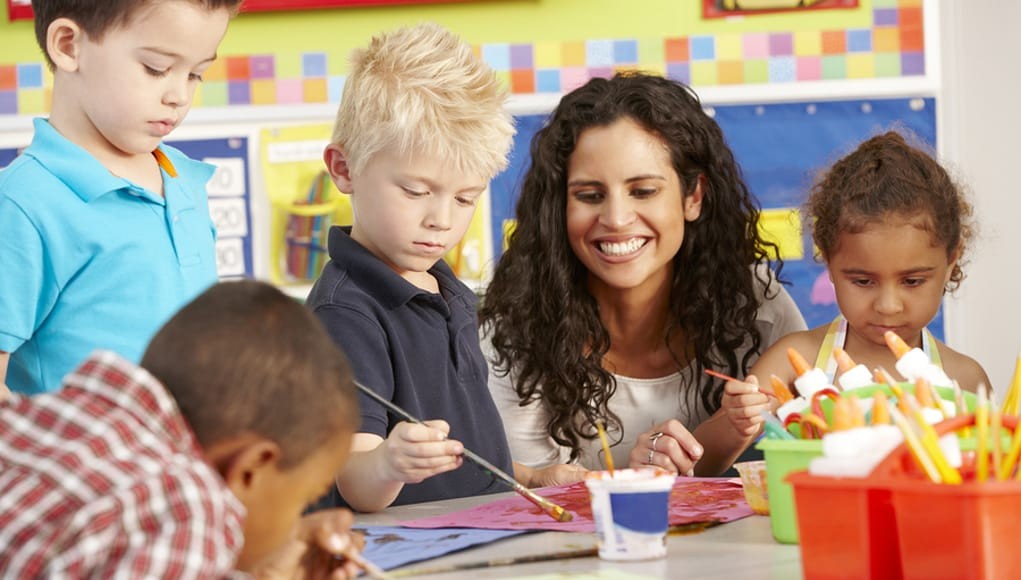Early childhood is one of the most important periods of brain development. Neural pathways are established, developing skills, and creating the foundation for a lifelong love of learning and creativity.
What is creative learning?
Creative learning is as simple as child’s play. Children are encouraged to explore, adapt, and refine materials and concepts. This may be as simple as a creative craft activity, or a long-term project such as growing vegetables in your garden.
Experimentation allows children to develop an understanding of the world around them. The child explores the ways in which different mediums respond when handled, understanding cause and effect, problem solving, and developing and testing hypotheses.
A rich tapestry of knowledge is developed as the child can apply an earlier concept to a new activity. For example, thinking of how a cake is made with wet ingredients to bind the dry, can transfer to the sandpit, where water is needed to help form a sandcastle.
Visual arts are particularly important in a creative learning environment, child development through art and drawing is a key feature of our programs. The opportunity to explore and create with a range of materials offers children the chance to refine delicate motor skills, and find new forms of expression, which may benefit emotional regulation.
When creative learning is applied in early childhood development, it offers children the chance to be active participants in their learning, by fully engaging their bodies, minds, and senses.
Benefits of creative play in early childhood
Creative play is one of the most expansive and engaging methods of a child’s education and is important for both their physical, and brain development. It helps develop a child’s creativity, curiosity, and independence, and encourages the formation of skills that can be applied throughout their entire life.
Language development
Children’s vocabulary is expanded through creative play. When creative discovery is facilitated by an educator, a child can learn a variety of new words and have the proper use demonstrated through physical exploration and repetition.
Physical development
Creative development encourages active participation. Games, dances and obstacle courses can improve gross motor skills including balance and coordination. Fine motor skills including grasping a pencil are developed through creative craft for kids, or construction projects.
STEM concepts
When engaged in creative learning, children are exposed to a range of mathematical and science-based concepts, including cause and effect, physics, and numerical value. Children can predict the outcome of an action, and then compare if the result was what they had expected. Even a simple block tower offers learning in engineering and mathematics as the need for a stable foundation is explored, and blocks are counted to see how tall the tower has grown.
Emotional and mental health
Providing a safe environment to explore, and sometimes have things go wrong, allows children to build their confidence. In a creative environment, an unexpected result can be met with “let’s try again, but differently this time!” and develop a child’s resilience and a positive attitude towards trying new activities without fear of failure.
Independence and self-care
Skills acquired during creative play can be assimilated into everyday life eg: pouring, cutting and sorting. The independence to explore, and solve problems allows children to feel more confident in their abilities and apply the skills they have learned in other areas. Creative learning also promotes autonomy, and children will direct their own education, delving deeper into activities and skills that interest them.
Learning through play at Rising Stride
Creative learning in early childhood does not have to be a strict routine. Allowing children to play freely and express their interest in certain activities or objects, then facilitating that exploration is all that is necessary. Some of the most profound learning opportunities happen while playing.
When supervised by an engaged adult, children’s playtime offers a variety of teachable moments. Whether regulating emotions, understanding how the world works, or learning a new skill, play-based learning offers children the opportunity to explore and develop socially, physically, cognitively, and emotionally, through song, dance, games, and craft.

